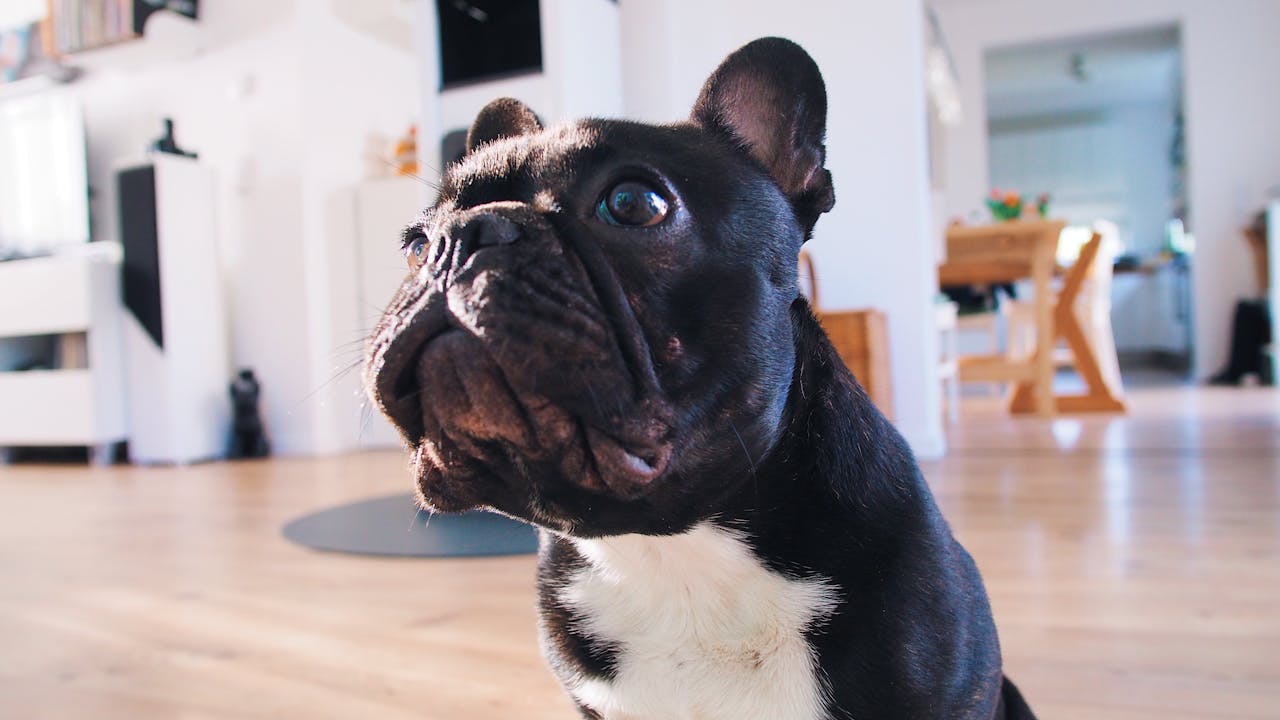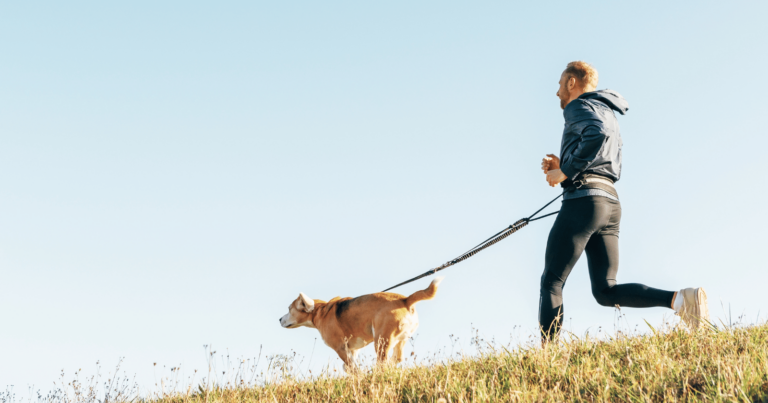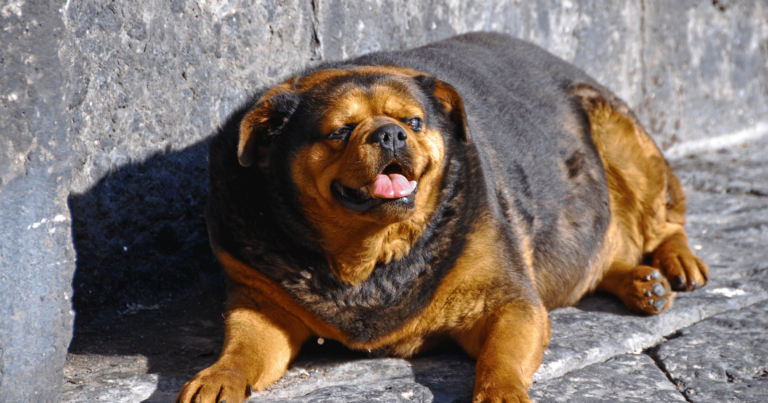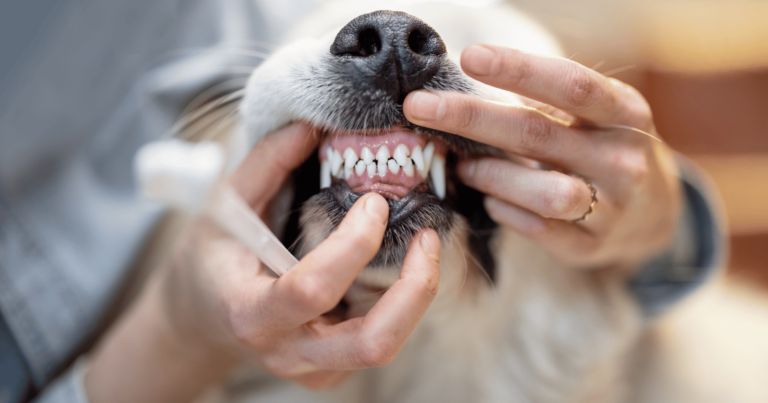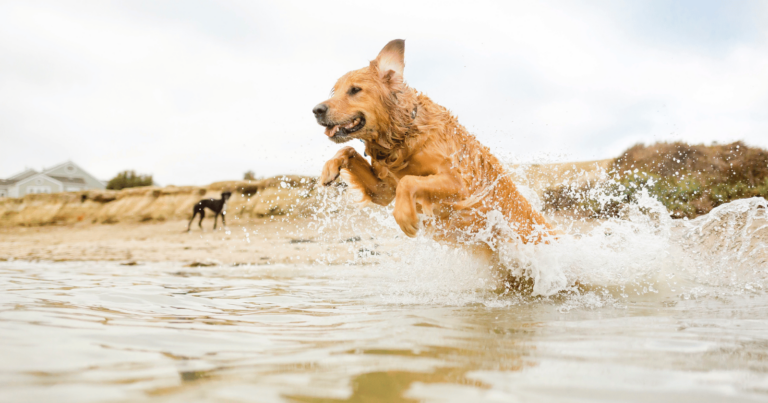Helping your furry friend shed those extra pounds isn’t just about looking good.
It’s about improving their overall health and adding years to their life.
After all, obesity in dogs can lead to various health issues such as diabetes, heart disease, and joint problems.
But don’t worry, taking steps to help your pooch lose weight safely doesn’t have to be a daunting task.
In this guide, we’ll walk you through 7 effective strategies that are not just easy to implement, but also highly beneficial for your dog’s wellbeing.
1. Balance their diet
The first step in helping your dog lose weight is taking a good look at what they’re eating.
This means providing them with the right amount of proteins, fats, and carbohydrates.
Protein is especially important as it helps to maintain their muscle mass while they lose weight.
Fats are necessary too but in moderation, as they are high in calories.
Carbohydrates should make up the smallest portion of their diet.
Keep an eye on portion sizes as well.
It’s easy to overfeed our pets without realizing it.
If you’re unsure about how much food your dog should be eating, consult with your vet.
They can provide guidance based on your dog’s breed, age, and current weight.
Feeding your dog the right kind of food is equally important.
Avoid foods high in sugar and fillers.
Instead, opt for high-quality dog food that lists a source of animal protein as the first ingredient.
2. Prioritize regular exercise
Regular physical activity is vital for your dog’s weight loss and overall health.
It not only helps burn calories but also keeps your dog’s joints flexible and muscles strong.
Aim for a mix of exercises to keep things interesting for your pup and to work different muscle groups.
Walking is a great starting point.
It’s gentle on the joints, and you can easily adjust the pace and distance to suit your dog’s fitness level.
Gradually increase the intensity by introducing activities like running, swimming, or fetch.
These exercises are more strenuous and help burn more calories.
However, always observe your dog during these activities.
If they seem tired or uncomfortable, dial back the intensity.
Interactive toys can also help keep your dog physically active, especially on days when outdoor activities aren’t possible due to weather conditions.
Toys that require your dog to move or think to dispense treats can provide both physical exercise and mental stimulation.
And don’t forget about playtime!
It’s a fun way for your dog to stay active and it strengthens your bond with them.
3. Monitor their progress
Regular weigh-ins can help you determine if your dog is losing weight at a safe and healthy rate.
Most vets recommend aiming for a weight loss of about 1-2% of their body weight per week.
You can use a regular scale to weigh your dog.
If you have a small dog, you can hold them while standing on the scale, note down your combined weight, and then weigh yourself alone.
Subtract your weight from the combined weight to get your dog’s weight.
Visual assessments are also useful in tracking progress.
You should be able to feel your dog’s ribs easily when you run your hands along their sides.
They should also have a visible waistline when viewed from above and a tuck in their belly when viewed from the side.
Remember, losing weight too quickly can be harmful to your dog’s health.
If you notice rapid weight loss or if your dog seems unwell, please consult with a vet immediately.
Monitoring progress isn’t just about tracking weight loss.
It’s also about observing changes in your dog’s energy levels, mood, and overall health.
A healthier diet and regular exercise should make your dog more energetic and happier.
4. Schedule regular vet visits

Your vet plays a crucial role in guiding your dog’s weight loss journey, providing professional advice and making necessary adjustments to the diet and exercise regimen.
Your vet can provide a detailed health check-up, ensuring there are no underlying health issues contributing to your dog’s weight gain.
They can also recommend the best diet and exercise plan tailored to your dog’s specific breed, age, size, and overall health condition.
Vets can also help you set realistic weight loss goals for your dog.
It’s important to remember that every dog is unique and what works for one may not work for another.
Your vet can help you understand what a healthy weight range is for your dog and how long it might take to reach that goal.
Regular vet visits also allow you to monitor your dog’s progress closely and make adjustments to their weight loss plan as necessary.
If your dog isn’t losing weight despite following the recommended diet and exercise plan, your vet can help troubleshoot the problem and suggest changes.
5. Encourage more playtime
Playtime is not just fun for dogs, it’s also a fantastic way to help them get more exercise and burn off extra calories.
Plus, it’s a great opportunity to strengthen the bond between you and your furry friend.
The type of play will depend on your dog’s breed, age, and health.
Some dogs might enjoy a game of fetch, while others might prefer tug-of-war or interactive toys.
Try to find a variety of games and toys that your dog enjoys so that playtime is always exciting for them.
In addition to burning calories, playtime also provides mental stimulation for your dog which is just as important for their overall wellbeing.
Games that challenge your dog to think or solve problems can help keep their mind sharp.
While incorporating more playtime can be beneficial, it’s important to remember not to overdo it, particularly if your dog is not used to high levels of activity.
Start slow and gradually increase the intensity and duration of play over time.
6. Maintain consistency
Consistency is key when it comes to helping your dog lose weight.
Therefore, it’s crucial to stick with the diet and exercise plan and not get discouraged if results are not immediate.
Be consistent with meal times and portion sizes.
Regular feeding times can help regulate your dog’s metabolism and prevent overeating.
Similarly, consistent portion sizes ensure that your dog is not consuming more calories than needed.
As for exercise, aim for regular, daily activities rather than sporadic, intense workouts.
This could be as simple as a daily walk or playtime session.
Consistent daily exercise not only aids in weight loss but also helps to improve your dog’s overall fitness level.
7. Use positive reinforcement

Dogs, like humans, respond well to praise and rewards, and this can be a powerful tool in your weight loss efforts.
Whenever your dog makes progress, whether it’s choosing to play instead of laze around, or not begging for extra treats, reward them with praise, pats, or their favorite non-food-related activity.
This will encourage them to repeat the behavior.
It can be challenging to resist those puppy eyes begging for treats, but rewarding your dog with extra food can contribute to weight gain.
Instead, find other ways of showing affection and rewards.
Maybe it’s an extra few minutes of playtime, a new toy, or simply some extra belly rubs.
Positive reinforcement not only aids in weight loss but also strengthens the bond between you and your furry friend.
It makes the entire process more enjoyable for your dog.
Maintaining a healthy weight
Congratulations on taking the necessary steps to help your dog lose weight!
Reaching the goal weight is an achievement worth celebrating.
However, the journey doesn’t end here.
Maintaining that healthy weight is just as important as losing the extra pounds.
Like weight loss, weight maintenance also requires a consistent, balanced diet and regular exercise.
Continue with the healthy habits you’ve established during the weight loss journey.
Remember, every dog is unique.
What works for one might not work for another.
This journey isn’t always linear, and it’s okay to have ups and downs.
The key is to stay committed and keep your dog’s best interests at heart.


